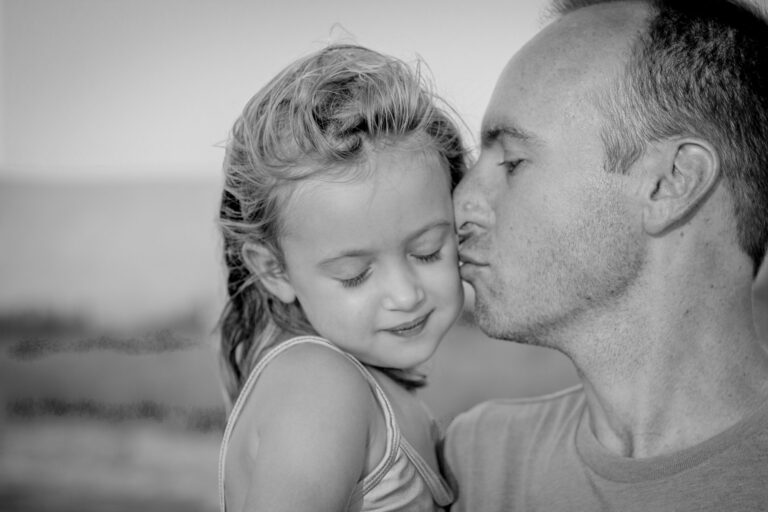When a child’s relationship with food takes an unexpected turn—from selective meals to sudden refusals, strange rituals at the table, or unexplained weight fluctuations—worry can quickly take hold for any parent. Children’s eating disorders often evoke anxiety, frustration, and a gnawing sense of urgency. These are not merely phases or quirks; they are medical conditions with complex roots and far-reaching impacts. But what truly distinguishes fleeting feeding challenges from real danger? And how can you, as a parent, respond—not only to support your child’s growth but also to safeguard their developing mind?
In the following sections, discover how to recognize warning signs, demystify myths, and decode the tangled web of factors underlying children’s eating disorders. Explore proven strategies—from medical care to daily routines—to foster resilience, well-being, and optimism, even when the journey feels daunting.
What Are Children’s Eating Disorders?
Children’s eating disorders comprise a spectrum of serious mental health conditions marked by disruptive eating patterns—restriction, bingeing, purging, or profound food aversion. Far more than picky eating or developmental whims, these disorders are intertwined with obsessive thoughts about food, body image, or weight. Imagine a child suddenly refusing whole categories of food, feeling anxious at mealtimes, or developing strict rules about eating—the picture quickly becomes more unsettling.
Underlying these patterns are intertwined biological (genetic predispositions, appetite regulation differences), psychological (anxiety, low self-esteem), and environmental risk factors (family stress, societal messages, peer influence). There is no single cause, and children’s eating disorders can strike regardless of gender, background, or family structure—defying many persistent myths.
Are All Feeding Challenges Disorders?
Hardly. In children under three, most feeding difficulties are traced to physical or digestive issues—gastroesophageal reflux, regurgitation, or transient sensory sensitivities. These episodes are frustrating yet often fleeting. If weight and growth track along expected curves, real harm is rare. Tools like growth charts and dietary recalls can help objectively monitor progress and spot when the picture becomes more concerning.
True eating disorders (like anorexia nervosa or binge eating disorder) emerge more frequently from around ages 9 to 12. Exceptions exist—infantile anorexia is an uncommon yet serious diagnosis for persistent food refusal or intense selectivity before age three. If such patterns interfere with energy, mood, or development, a thorough professional evaluation is necessary.
Recognizing Early Signs: When to Seek Help
Vigilance is key. Spotting sudden weight changes, loss of appetite, chronic fatigue, or avoidance of meals may signal the emergence of a disorder. Does your child strictly avoid eating with others? Exhibit ritualistic behaviors (like dissecting food or arranging items repeatedly)? Express worries about “getting fat” or make negative comments about their body? These are not mere quirks—they could hint at a deeper problem.
Beyond behavioral clues, physical warning signs deserve attention:
- Stunted growth or weight plateaus
- Persistent gastrointestinal complaints (constipation, abdominal pain, bloating)
- Bradycardia (unusually slow heart rate), cold extremities
- Hair thinning or skin changes
Social withdrawal, secretive food hoarding, skipping meals, or excessive exercise (sometimes compulsive and hidden) intensify concern.
Consult a healthcare professional if eating patterns affect energy, mood, or social life. For infants younger than three months, any combination of feeding refusal, lethargy, or sudden behavioral change—especially with fever—warrants immediate evaluation.
Myths and Misconceptions
Do only girls carry this burden? Hardly. Children’s eating disorders (and the distress they bring) are not gender-exclusive. Boys face similar risks, though societal stereotypes often mask their struggles. Nor does being a picky eater, in itself, forecast a disorder. Selective eating typically resolves over time; real disorders involve pervasive impacts on mood, health, and day-to-day functioning.
Another myth? That strict dietary rules and anxiety around food are just phases. In reality, entrenched food rituals—combined with mounting emotional distress—point to mental health roots, not fleeting whims.
Types of Eating Disorders in Children
Anorexia Nervosa
Picture a child who restricts their intake—sometimes dramatically—paired with intense fear of weight gain and a deeply distorted view of their body. Anorexia nervosa can present insidiously: skipping meals, tiny “safe” food portions, or avoidance of once-loved foods. Physical consequences are severe—delayed puberty, brittle bones, slowed heart rate, and life-threatening malnutrition. In very young children, a lack of interest in food or acute anxiety at the table may be a sign.
Bulimia Nervosa
Contrast this: periods of uncontrolled eating (binges), followed by secretive purging—vomiting, misuse of laxatives, or relentless exercise to “undo” the binge. Guilt, shame, dental erosion, digestive complaints, and swings in weight mark this disorder. The cycle often remains hidden for months, making detection challenging.
Binge Eating Disorder
Here, the cycle revolves around frequent, large amounts of food consumed rapidly, often in secrecy and without compensating behaviors. Emotional regulation falters—feelings of guilt, sadness, or numbness shadow each episode. Metabolic complications—like insulin resistance or obesity—can follow.
Avoidant/Restrictive Food Intake Disorder (ARFID)
Not every restrictive pattern ties back to shape or weight concerns. In ARFID, aversions stem from extreme sensory responses (texture, smell, appearance) or traumatic experiences like choking or vomiting. The repercussions—poor growth, nutritional deficiencies, and heightened anxiety about trying new foods—may overlap with other conditions such as autism spectrum disorder.
Other Specified Feeding or Eating Disorders (OSFED)
Some children develop distressing eating problems that defy neat classification: persistent purging without bingeing, or atypical anorexia where dramatic weight loss occurs but the child remains within “normal” weight ranges. These presentations are valid, serious, and demand equally comprehensive care.
Causes and Risk Factors: A Tangled Web
Consider genetics: a family history of eating disorders or mental health issues increases risk. Biology plays a role—variation in appetite-regulating hormones or neurotransmitters can predispose a child. Psychological factors, too—perfectionism, chronic anxiety, or early adversity. In younger children, feeding issues stem more often from sensory sensitivity or somatic discomfort than from weight-related worries.
Environment can tip the scale. Bullying, traumatic events, family stress, and pervasive media pressure all shape eating attitudes. It’s important to remember: children’s eating disorders are rarely the result of poor parenting or a rigid household. Multiple subtle triggers often intertwine.
Common Signs and Symptoms
Physical warning signs may include:
- Sudden or unexplained weight fluctuations
- Poor linear growth
- Low energy or chronic fatigue
- Digestive troubles, including persistent constipation or abdominal pain
- Amenorrhea (loss or delay of periods in older girls)
- Increased sensitivity to cold or thin, brittle hair
Behavioral and emotional clues:
- Unusual food rituals, like measuring bites or rearranging food
- Avoidance of family meals or withdrawal from social gatherings with food
- Hiding, hoarding, or discarding food
- Excessive exercise, often in secret
- Dramatic mood shifts around mealtimes, rigid routines, or refusal to eat in others’ presence
For infants and toddlers, short-lived feeding refusals or sensory aversions rarely warrant panic—especially when growth and energy remain robust. Longer or severe patterns, particularly with failure to thrive, deserve further assessment.
Health Impacts: Beyond the Dinner Table
The consequences reach well beyond the plate. Children’s eating disorders can jeopardize growth, cognitive development, and bone health. Malnutrition may lead to weakened immune response, risk of fractures, and chronic organ complications. Learning and memory can stall with prolonged dietary restriction.
The ripple effects impact daily routines, family relationships, and peer interactions. Parents often grapple with guilt, confusion, and fatigue, while children may feel isolated or misunderstood. Early medical and psychological intervention—the sooner, the better—can halt or even reverse many long-term effects.
Diagnosis: Piecing Together the Puzzle
Accurate diagnosis starts with attentive listening and observation. Growth charts, laboratory screening (checking for electrolyte imbalances, anemia, liver or kidney concerns), and structured psychiatric interviews help clarify the root causes. Distinguishing between developmental feeding issues and true eating disorders—a task for pediatricians, nutritionists, and mental health professionals—often requires patience, teamwork, and open conversation.
Effective Treatments for Children’s Eating Disorders
Addressing children’s eating disorders demands a multi-layered approach: restoring nutritional status, supporting emotional healing, and equipping the whole family with new strategies. Medical stabilization comes first when needed. Family-based treatment empowers parents to guide recovery and supervise meals, while cognitive behavioral therapy targets distorted thinking and rigid behaviors in older children and teens.
Psychological or educational support is essential. Nutritional counseling tailors meal plans to individual needs and preferences, helping rebuild a positive relationship with food. In some cases, targeted medications may address anxiety or depression, though these aim to supplement—not replace—psychological work.
Support varies in intensity: outpatient visits, day programs, or inpatient hospital admission when medical risk demands it. Consistent professional follow-up nurtures progress and prevents relapse.
Supporting Your Child and Family: Practical Strategies
Fostering recovery rests on compassion, patience, and structure. Rather than battling over bites, foster a peaceful meal environment and avoid direct pressure to consume a certain amount. Ask open-ended questions—How are you feeling today? Is anything worrying you about food right now?—to shift focus from what’s on the plate to what’s in the heart.
Consistent routines around meals (same place, similar times, gentle transitions), opportunities to safely explore new foods, and proud celebration of small victories gradually rebuild security. Collaboration with teachers and trusted caregivers can reinforce this consistent approach, especially for children struggling in multiple settings.
And don’t forget yourself. The journey is demanding—emotional support for parents matters, too. Seeking help isn’t a sign of weakness but of protective strength.
Prevention and Building Long-Term Resilience
How can you, as a parent, reduce the risk and nurture resilience? Promote body positivity by avoiding derogatory or restrictive talk about food or appearance. Diverse, regular family meals set the stage for healthy eating habits and open communication. Teach your child to tune into hunger and fullness cues—appreciating what their body needs rather than external rules.
Intervene early at the first signs of stress or eating difficulties, steering away from labeling foods as “good” or “bad.” Celebrate attributes and achievements unrelated to appearance—a drawing, a joke, an act of kindness. Community support, from schools to local organizations, amplifies these messages, reducing stigma and sowing the seeds for lifelong well-being.
Key Takeaways
- Children’s eating disorders are multifaceted, rooted in biology, psychology, and environment; they require nuanced understanding and timely action.
- Most early childhood feeding challenges fade as development progresses, especially when growth and energy stay stable.
- Persistent or severe eating issues, whether in infants or older children, require medical and psychological evaluation—better to ask early than wait.
- Early detection and a supportive, multidisciplinary approach maximize the chance for recovery and resilience.
- Parents, educators, and health professionals alike hold transformative potential in shifting habits—and hope.
For more tailored advice, access to pediatric questionnaires, and ongoing support, you can download the Heloa app—a trusted ally for personalized health guidance and peace of mind.
Questions Parents Ask
How can I talk to my child about eating disorders without causing shame or anxiety?
Approaching your child with kindness and an open heart makes all the difference. Choose a calm and private moment to talk. Use gentle, non-judgmental language—focus more on their well-being and feelings than on food or appearance. You might say, “I’ve noticed you seem worried at mealtimes, and I care about how you’re feeling.” Open-ended questions, like “How are things going for you lately?” can invite sharing. Reassure your child that everyone faces challenges and they’re not alone; what matters is to talk together and seek support when things feel overwhelming.
Are eating disorders in children linked to family dynamics or parenting style?
While it’s a natural concern for parents to wonder if their choices at home have a direct impact, eating disorders are complex and rarely the result of a single factor. Numerous elements—genetics, temperament, life events, and social influences—can all play a role. It’s important not to blame yourself; showing your child understanding, support, and patience helps more than any “perfect” parenting style. You can work together with professionals to create a nurturing environment and support your child’s unique needs.
What steps can I take at home to support my child through recovery?
Small, steady actions can truly make a difference in supporting recovery. Creating a predictable and warm routine around meals, celebrating small milestones, and maintaining open communication all foster a safe space for your child. Try to avoid focusing on food or weight in everyday conversations—prioritize joy around shared moments and other interests. Encourage your child’s strengths and self-worth beyond what’s on their plate. And most of all, don’t hesitate to ask for support for yourself as well; recovery is a path for the whole family, and caring for yourself helps you care for your child.
Further reading:









